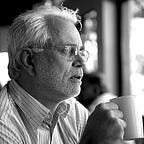Sentenced to death at age 13
“Past criminal tendencies” convinces a Boston judge in 1837 to hand down the extreme sentence
IN EARLY JUNE OF 1837, two orphan boys who lived at the almshouse in Cambridge, Massachusetts, were tried for the crime of arson.
Thirteen-year-old Michael Monohon and 10-year-old Michael Whaylan were both charged with setting fire to a barn on the property, which according to the June 1837 New Yorker destroyed several other buildings and took one man’s life. It was proven during their trial that they were hired to set the fire “by a man of dissolute character, an inmate, who entertained a deadly hostility for the institution,” according to an account in the Baltimore Sun. Both boys initially plead guilty, but their pleas were not received, and a trial was ordered.
Massachusetts almshouses dated to 1758, and were constructed as refuges “for the truly homeless, the ill, and the involuntarily idle.” Between late 1758 and 1800, some seventy-two hundred admissions from as little as one day to several years in some cases were ordered into the Boston Almshouse by the Overseers of the Poor. Cambridge’s first almshouse was in Harvard Square starting in 1779, and a second opened in an existing building in North Cambridge in 1786. The third one that burned was constructed in 1818 near today’s Sennott…
